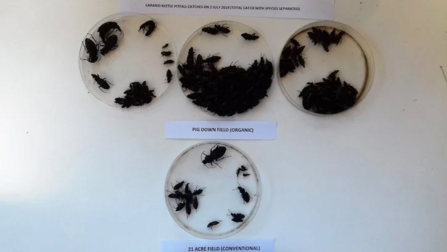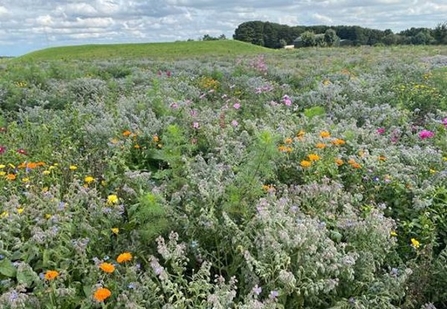Blog written by Wilfred Mole, director of Pertwood Organic Farm
Lower Pertwood Organic Farm has been in the ownership of the present custodians for 15 years but before that it was fully organic for over 20 years.
The previous owner Mark Houghton-Brown, who inherited the farm from his grandfather, was passionate about the concept of organic farming and laid the groundwork for the current landscape.
Since acquiring the main organic farm, two additional adjacent farms have been acquired which are currently still conventional. The plan is to convert them to organic when current government policy initiatives with regards to rewarding farmers for improving soil health is fully clarified. In the meantime, they provide us with a very useful way of constantly comparing a field that has been organic for 35 years to one that is constantly under pressure from man-made destructive inputs.
We have, more recently, employed specialists to carry out studies to examine the ecology of this landscape.
One focus has been a comparison of ground beetle and spider populations between organic farmland, which has been completely free of chemical fertilisers and pesticides, and the harsher commercial farming environment that exists on many farms today. We employed a professional entomologist, Stuart Corbett, to carry out intensive surveys on fields in both categories, and he produced a report clearly indicating significant differences between them.
This report is available on our website www.pertwood.co.uk, but a brief summary of his findings showed that Carabid beetle populations were three and a half times and spider populations were twice as numerous in a field growing organic oats than in a conventional field of winter wheat.
It was surmised that, as well as the absence of direct chemical toxicity, soil conditions in the organic system benefited survival of these invertebrates.
Enhanced levels of soil organic matter increase its moisture retaining capacity and this enables more successful development of prey for both beetles and spiders. These moist conditions also increase larval survival of beetles that are more prone to desiccation in drier conventionally farmed soils. In addition, greater weed coverage present on organic fields provides more shade, thereby increasing soil moisture retention.
Importantly, as well as these measured effects on biodiversity, this study also highlights the potentially adverse consequences to agroecosystems of conventional farming practice in forecasted climate change scenarios and indicates that organic farming can help to combat its impacts.




